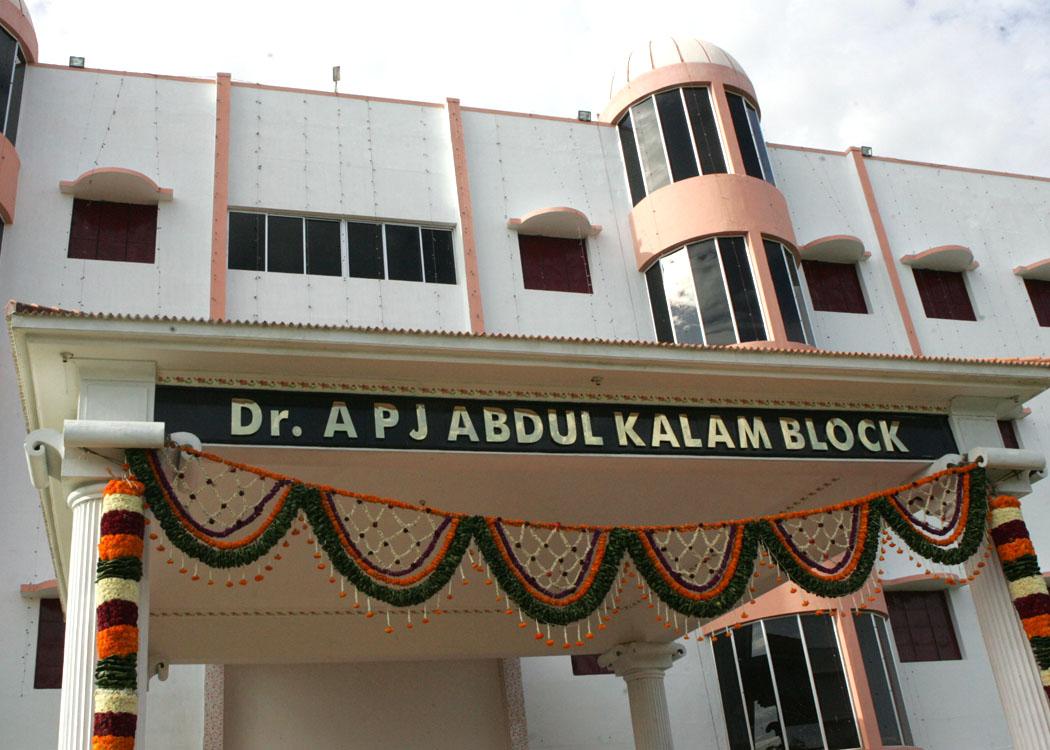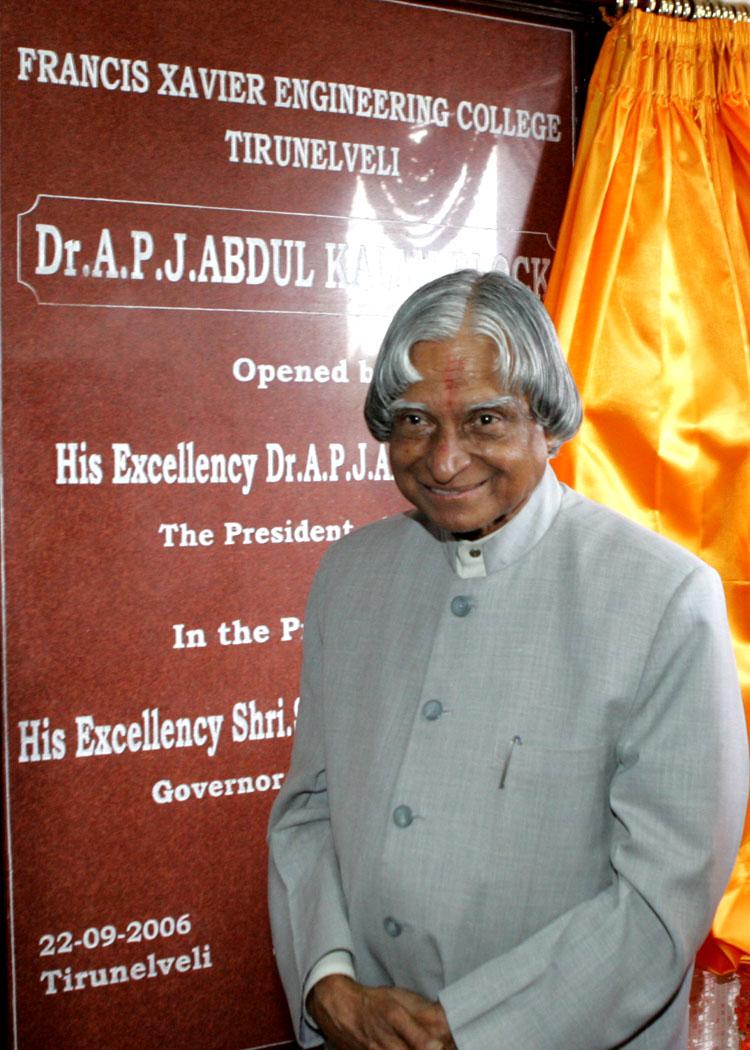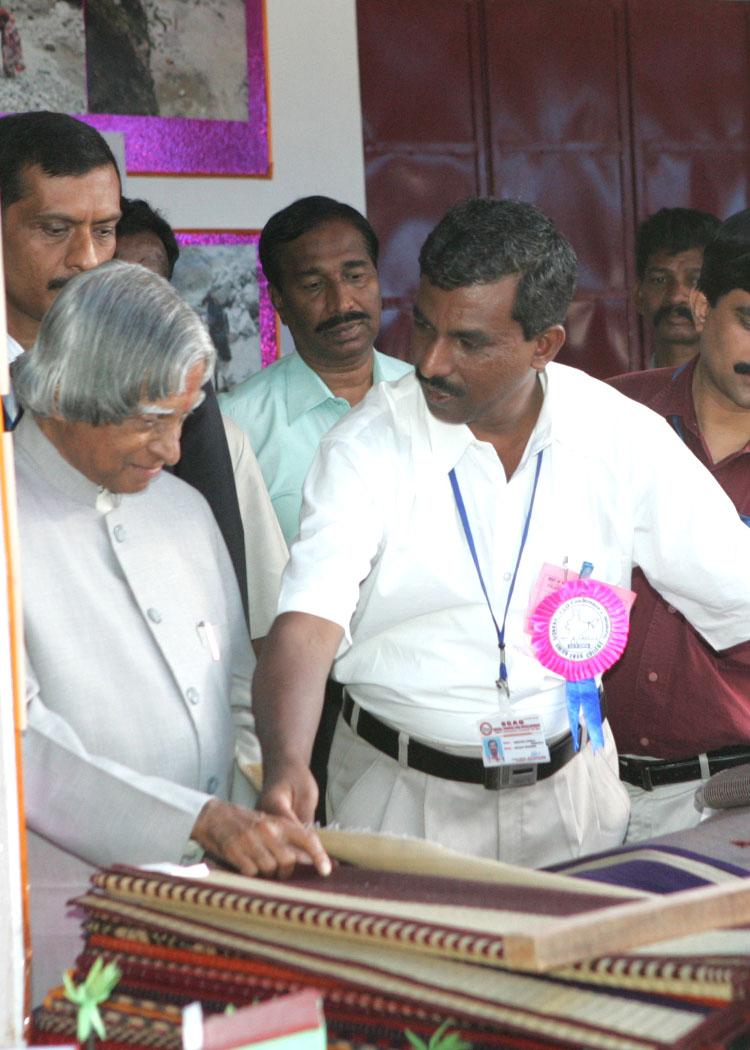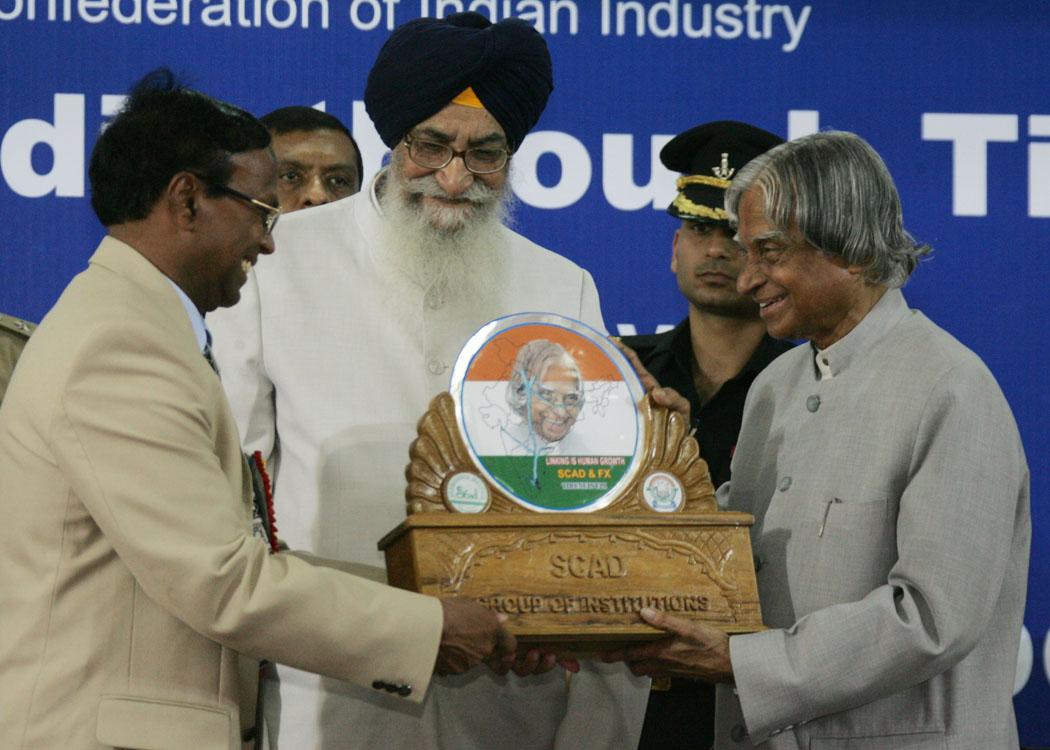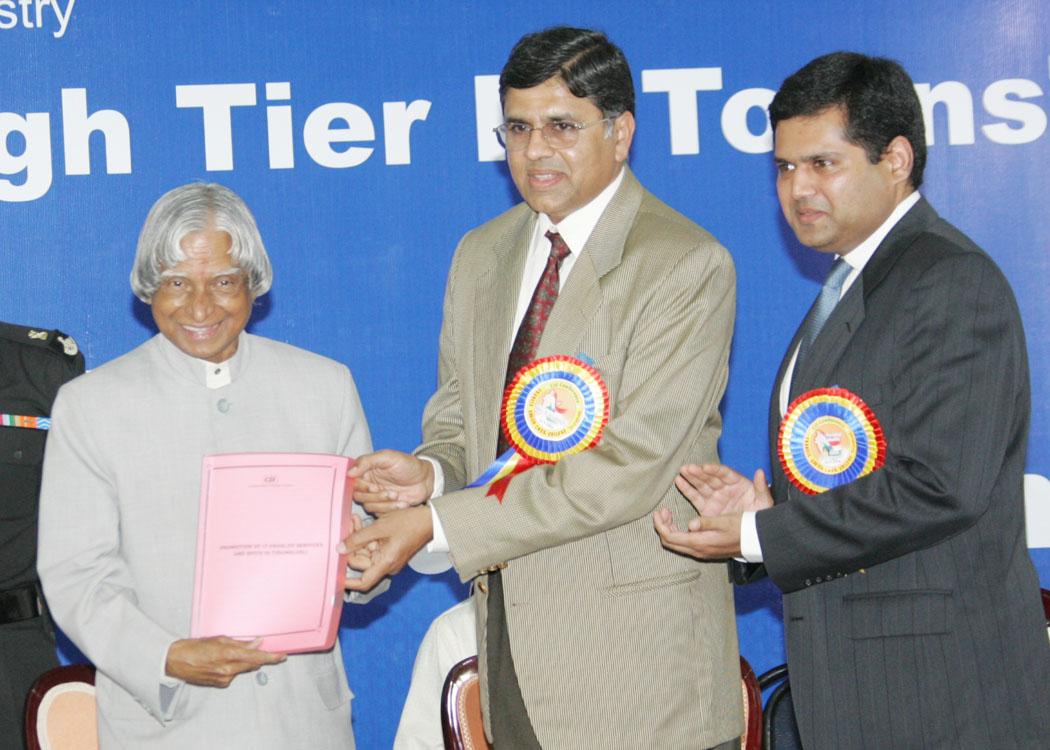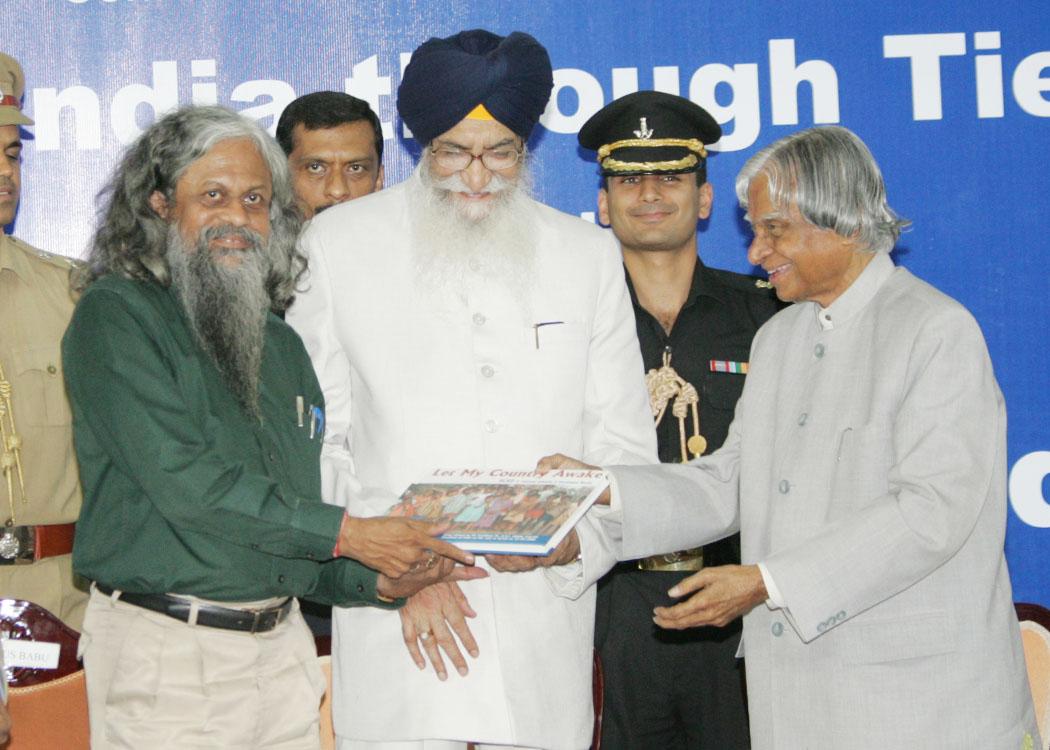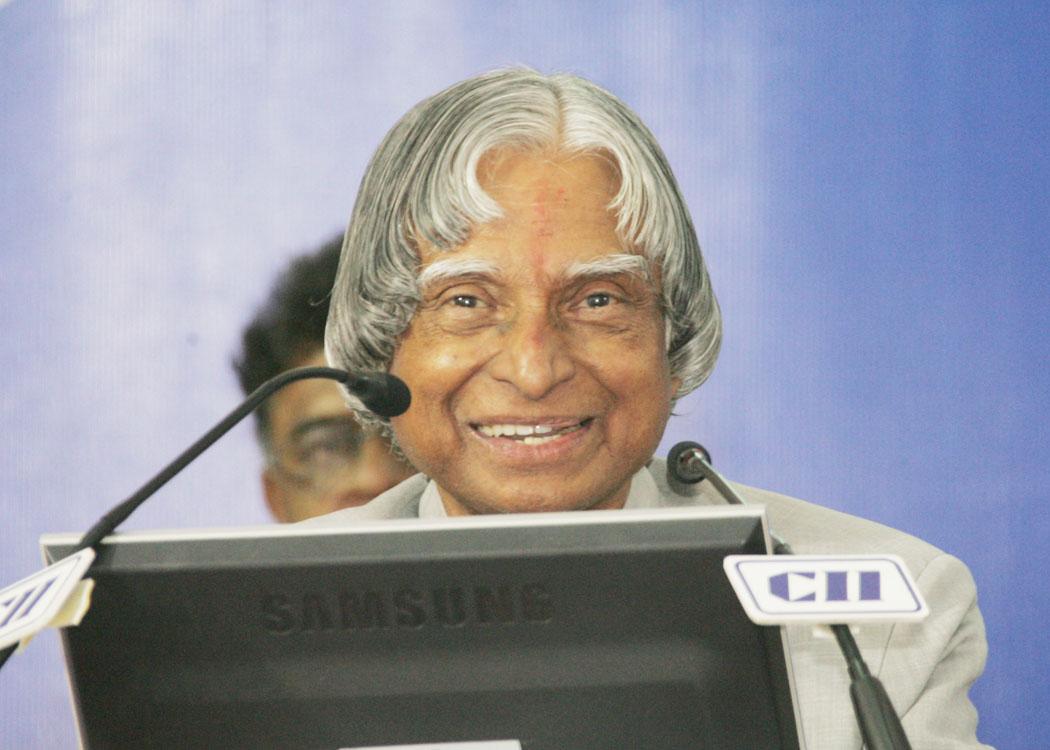Address at the Confederation of Indian Industry, Tirunelveli, Tamil Nadu
Tirunelveli : 22-09-2006
Societal Transformation through knowledge industries
I am indeed very happy to participate in the seminar "Transforming India through 3-tier Towns" organized by the Confederation of Indian Industry (CII) in partnership with Francis Xavier Engineering College and Key Consultants. I convey my greetings to members of CII, entrepreneurs from Tirunelveli, Tuticorin, Ramanathapuram and Kanyakumari, educationist, bankers, students and other distinguished participants. The topic you have selected is very important for the reasons that only by developing two tier cites and three tier towns, the transformation of states will be assured. Indeed three tier towns will become the focus place for PURA missions. I was thinking, what thoughts I can share with you on this occasion. I have selected the topic for discussion "Societal Transformation through knowledge industries".
Law of development
In the last few years, I have been studying the development patterns and the dynamics of connectivity between nations, especially in trade and business. As you all know the world has few developed countries and many developing countries. What is the dynamics between them and what connects them? A developed country has to market its products in a competitive way to different countries to remain a developed country. For the developing countries to get transformed into developed countries; they too have to market their products to other countries in a competitive way. Competitiveness is the common driving factors between the two types of nations. Competitiveness has three dimensions: quality of the product, cost effectiveness and product is in the market just-in-time. Indeed this dynamics of competitiveness in marketing of products by developing and developed countries is the law of development. There is a relationship between the core competence and the competitiveness of the country. Such a law applies to individual companies as well. A nation can be competitive only if its products and systems are produced competitively in an environment which is inherently competitive for reasons such as for example that infrastructure can be easily developed and skilled human resource is locally available. Now I would like to talk to you about the profile of a competitive India.
Profile of a Globally Competitive nation
Global competitiveness for any nation is indeed a big challenge. For achieving such a competitive edge for a nation, it is essential to have a vision. I would like to share with you my visualization of such a nation.
1. A Nation where the rural and urban divide has reduced to a thin line.
2. A Nation where there is an equitable distribution and access to energy and quality water.
3. A Nation where agriculture, industry and service sector work together in symphony, absorbing technology thereby resulting in sustained wealth generation leading to greater high value employment opportunities.
4. A Nation where education is not denied to any meritorious candidates because of societal or economic discrimination or because of constraints of rules.
5. A Nation which is the best destination for the most talented scholars, scientists, and investors from all over the world.
6. A Nation where the best of health care is available to all its billion population and the communicable diseases like AIDS/TB, water and vector borne diseases and other stress diseases, cardiac diseases, cancer and diabetes are brought down.
7. A Nation where governance uses the best of the technologies to be responsive, transparent, fully connected in a high bandwidth e-governance grid, easily accessible and also simple in rules, thereby corruption free.
8. A Nation where poverty has been totally eradicated, illiteracy removed and crimes against women are absent and none in society feels unalienated.
9. A Nation that is prosperous, healthy, secure, peaceful and happy and continues with a sustainable growth path.
10. A Nation that is one of the best places to live, on the earth and brings smiles on a billion plus faces.
Now, I would like to discuss the challenges faced by our nation now.
India's National Missions - The Challenges
India's current population is about one billion people. We are going through a major challenge of uplifting of 220 million people who are below the poverty line and also to give better life for many millions who are on the border line of poverty or just above the poverty line. They need a decent habitat, they need work with reasonable income, they need food, they need speedy access to health care, and they need education and finally they need a good life and hope for a better future. Our GDP is growing at more than 8% per annum on an average. Whereas, economists suggest that to uplift the people below the poverty line, our economy has to grow at the rate of 10% per annum consistently, for over a decade.
Integrated action: To meet the need of one billion people, we have the mission of transforming India into a developed nation. We have identified five areas where India has a core competence for integrated action: (1) Agriculture and food processing (2) Reliable and Quality Electric power, Surface transport and Infrastructure for all parts of the country. (3) Education and Healthcare (4) Information and Communication Technology (5) Strategic sectors. These five areas are closely inter-related and if properly implemented, will lead to food, economic and national security of our country. In each of these areas, there is wealth of opportunities awaiting many entrepreneurs in the nation.
Engines for Growth: Emphasis would be on full utilization of natural and human resources of the nation to meet the demands of the modern society. We should also remember that about 50% of our population is young people with aspirations for better living. Value addition in Agriculture, Manufacturing and Service sectors, building the national core competence and technologies will lead to additional high-income employment potential. The engines for growth will be accelerated by launching of five national missions, which are common to all of us wherever we are on planet earth. The totality of these five missions will enable achievement of 10% GDP growth rate per annum. It is possible to do so with ecological and economic sustainability. It is not the mission of governments. It is a collective efforts of big and small businesses, science and technology and academic institutions, financial institutions and many others who have confidence that we can do it.
With these aspects in view, we have already laid down the road map. The priority for the government is to convert the road map into various missions. It is to be done in a decentralized manner allowing a greater role for private enterprise and local initiatives. While converting the vision into different missions we seem to have many thoughts and variety of routes to reach the goal. This is where there is a need to have a coherent thinking among all the members of the society. All of us have to think that the nation is greater than an individual or an organization.
Changing Patterns of Society
When the world was moving from the industrial to information and knowledge era, we witnessed a changing pattern in the sectoral share of GDP and the number of people employed in each sector. The sectoral share of Gross Domestic Product (GDP) percentage has undergone a considerable change. Contribution of agriculture to India?s GDP has reduced from 39% to 22% during the period 1979 to 2004. During the same period contribution of manufacturing sector has moved from 24% to 27% and whereas the contribution from the services sector has increased from 37% to 51%. There has been considerable change in the employment pattern also. The percentage of people employed in agriculture has come down from 64% to 54%. Simultaneously, the percentage of people employed in manufacturing has gone up from 15% to 19% and in the service sector from 20% to 27%. This trend has to continue and by 2020 our employment pattern should aim at 44% in agriculture, 21% in manufacturing and 35% in service sectors. The displacement of 10% people from agriculture sector has to be facilitated through skill enabling for undertaking value added tasks in the rural enterprises so that migration to urban area is reduced. Instead of the person from the rural areas going to urban towns in search of jobs in manufacturing and services sectors, PURA (Providing Urban Amenities in Rural Areas) facilitates creation of employment in the rural areas itself. PURA achieves this by providing physical, electronic and knowledge connectivities to a cluster of villages thereby leading to their economic connectivity and prosperity. I would like to give an example of Byrraju PURA which has created reverse migration of educated youth from urban areas to rural area.
Byrraju PURA
Byrraju Foundation of Satyam near Bhimavaram has undertaken the mission of establishing 32 Ashwini centers benefiting 116 villages with the population of around 500,000 people. It has provided the electronic connectivity through wireless (512 kbps to 2 mbps), knowledge connectivity in cooperation with National Academy of Construction, Hyderabad and other domain experts, thereby creating economic connectivity in these villages.
Economic Connectivity: During the last five years of its operation, it has skill enabled and knowledge enabled in areas such as construction, tailoring, garment production, IT and spoken English skills. This programme resulted in 3000 jobs with the minimum earning of Rs. 3000 per month, this is 3 times that of their earlier earning potential. A rural BPO Gram IT, established in Jallikakinada center has trained the unemployed graduates in IT skills and spoken English and employed 100 people to do the BPO operations such as transaction processing of Human Resource data of Satyam Computers as a back office processing; data processing of one million self-help-group members of Andhra Pradesh such as financial data, accounting data, spending pattern, cultural aspects under the programme of ?Mapping the bottom of the Pyramid?. This Gram IT BPO has effected the 10% reverse migration from Hyderabad to Bhimavaram. This model can be replicated by many of our IT companies in different parts of the country. While addressing NASSCOM-2006 India Leadership Forum in Mumbai, I had made certain suggestions to the industry captains which I would like to mention here.
How to attain the target: In order to attain the target of 200 billion dollar export by 2010 the essential components needed for the ICT industry are as follows:
1. India?s with its cost leadership in software products now it has to aim to the competitive in quality of the products and just in time delivery. Since there are number of countries competing for the $300 million market, continuously has to aim high.
2. NASSCOM and Governments have to assist small enterprises in software to have a standing in the market. This can be through consortium approach for business.
3. A major drive has to be undertaken in capacity building of graduates with the aim to provide value added IT Services, ITES and BPO.
4. We need to encourage innovation and creativity among our IT personnel and thereby contributing towards attractive solution to the customer resulting in higher return on investment in their business process.
5. Focus our ICT market also towards Asia Pacific, ASEAN and African countries so that we are more competitive than any other nation due to the human resource potential and cost advantage capability with our core competence in ICT sector.
6. Turn your focus on India, which has one billion people as market force who need potential in education, healthcare, e-governance and e-business. Certainly, it is the responsibility of the Government, NASSCOM and the Indian industries to enable a level playing field for the growth of small and medium ICT industries to contribute for bringing down the digital divide.
Infrastructural Pressure
If we have to meet our growth and export target in the ICT sector we have to shift our operations from metropolitan cities to 2-tier cities and 3-tier towns. Presently, number of people working in the IT industry is about 1.3 million. Most of the industries are located in Chennai, Hyderabad, Bangalore, Pune and Delhi. The infrastructural pressure has already been felt in these cities right now. If we add one million knowledge workers within the next few years, we will have to add at least 100 sq. feet per person of office space and 600 to 1000 sq. feet of living space. In effect, the major cities have to cater for construction of about a billion sq. feet of built up space almost annually which is beyond the capacity of our major cities now. Hence, it is essential that the BPO and ITES service move to tier-2 and tier-3 cities at the earliest. They should not be waiting for all the social infrastructures to come into the tier-2 and tier-3 cities. Once the enterprises come infrastructure can be progressive built up. For example, if we improve the road connectivity with six lanes from Tirunelveli to Madurai we should be able to reach Madurai less than three hours. This will enable fast movement and ensure that the tier-3 towns remains always connected with major business centre. Also we have to see how Tirunelveli can look forward to air connectivity, which can facilitate faster connectivity with the rest of the country. We have to see how we can enable Courtallem to handle the comfort of tourists through a number of interconnected actions including accessibility, lodging, restaurants, marketing, medical facilities, promotion further of tourist attractions nearby, further encouragement of specialties of the district including the pathamadi pai, Tirunelveli halwa.
Availability of quality human resource
The advantage of Tier-3 towns like Tirunelveli, Ramanathapuram, Kanyakumari and Tuticorin are that they have higher level of literacy compared to national average. The working knowledge of English in this region is also very good and has always been acceptable to the needs of software industries. Statistics will show that about 60% of the employees in the software industries in the metropolitan cities will be belonging to these districts. Hence, it is definitely desirable to establish BPOs and ITES services in this region. Entrepreneurs, educational institutions, banking and financial institutions, CII, NASSCOM, Chamber of Commerce and Industry should all come together and create BPOs and ITES establishments in these four districts with a target of at least One billion dollars of export within the next five years. When I was studying the economic profile of the western world, I found that the large portion of the contribution to GDP does not come from mega industries. It comes from small and medium industries employing four to fifty or hundred persons per enterprise. Hence, I am of the view if we have to increase our export growth we have to apportion the contribution from each district. This will make Indian export to grow much faster than the present trend.
Reverse migration increases profitability
In the IT domain our major IT industries are getting outsourced jobs from US and Europe. Now, the trend should be for our industries in the metropolitan cities to outsource job to enterprises located in tier-2 and tier-3 towns and rural PURA clusters such Byrraju PURA type. This will enable practicing of flexible working hours empowering women to work from their homes and provide productive jobs for physically challenged people. This approach of moving enterprises closer to rural areas will also ensure provision of productive jobs to the labour force which will be released from the agricultural sector due to application of science and technology.
Conclusion
In India, we have seen whenever a vision is generated, missions are created and mission mode operations have succeeded in governmental setup like space programme, atomic energy programme, agriculture programme, milk programme and defence research programme. Also in the private sectors, we have instances of empowered management systems particularly in Pharma and IT Sectors. With the background of successful mission mode operations in certain government programmes and the distinction between public and private sector and the illusory primacy of one over the other is vanishing, there is a possibility of evolving a management system for developing software industries in tier-2 and tier-3 towns. What we need to accomplish this mission is a creative leader. Who is the creative leader? Creative leadership means exercising the vision to change the traditional role from the commander to the coach, manager to mentor, from director to delegator and from one who demands respect to one who facilitates self-respect. I am sure with the dynamic environment what is prevalent in this Nellai Area definitely more creative leaders will emerge for business, industry particularly in IT, ITES and BPO, trade and rural development missions.
I inaugurate the seminar on Transforming India through Tier-3 towns and my best wishes to all the participants for success in their mission of shaping growth and nurture development of BPOs and ITES enabled services in Tirunelveli, Kanyakumari, Ramanathapuram and Tuticorin districts.
May God bless you.

